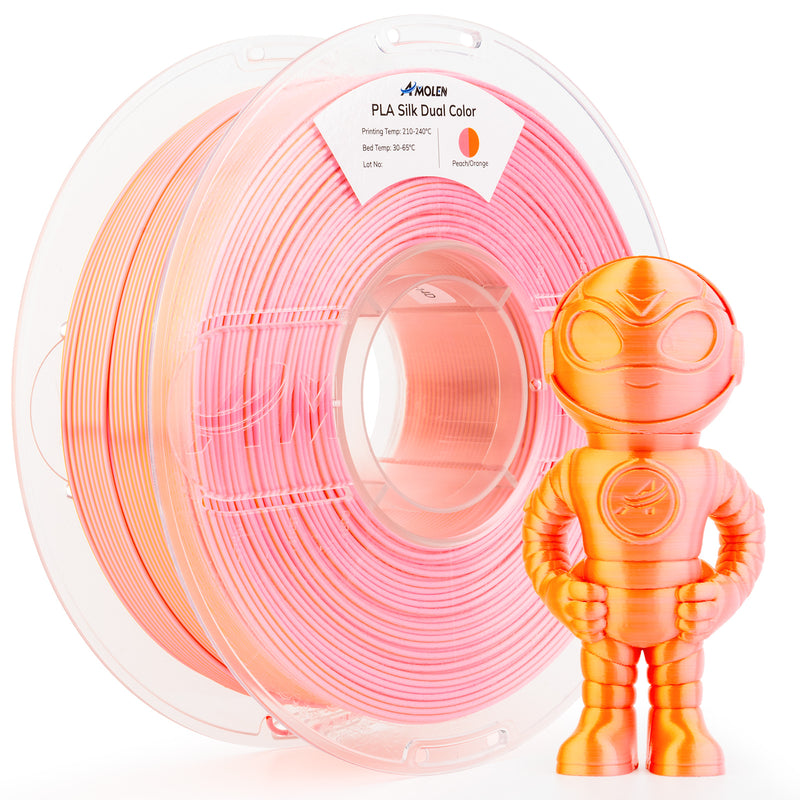Unlock Your Creativity: Discover the Magic of Wood PLA Filament for Stunning 3D Prints!
In the ever-evolving world of 3D printing, one material has been capturing the imagination of enthusiasts and professionals alike: wood PLA filament. This innovative filament combines the familiar characteristics of traditional PLA with the aesthetic appeal and tactile qualities of wood. As 3D printing continues to gain popularity for both practical and artistic applications, wood filament stands out for its unique ability to mimic the look and feel of real wood, adding a new dimension to creative projects. Whether you're a hobbyist looking to enhance your home decor or a designer aiming to create prototypes with a natural touch, wood PLA filament offers endless possibilities. Join the growing trend of incorporating this versatile material into your projects and discover the magic it can bring to your 3D prints!

What is Wood PLA Filament?
Wood PLA filament is a composite material made from a blend of traditional polylactic acid (PLA) and finely ground wood particles, which gives it a unique appearance and texture. Unlike standard PLA, which has a smooth and shiny finish, wood PLA offers a more organic look that resembles real wood grain. The composition of wood filament can vary, with different types of wood particles providing various colors and textures. This versatility allows for a range of finishes, from light oak to dark mahogany, enabling creators to achieve the aesthetic they desire. When printed, wood PLA can be sanded, stained, or painted, further enhancing its wood-like qualities. Friends who are passionate about 3D printing have shared their excitement about experimenting with different finishes, often resulting in stunning pieces that can be mistaken for handcrafted wooden items.
Benefits of Using Wood PLA Filament
One of the most compelling reasons to use wood PLA filament in your 3D printing endeavors is its aesthetic appeal. The natural wood-like finish adds warmth and character to prints, making them stand out in a sea of plastic creations. Additionally, wood PLA is easy to work with; it has similar printing properties to standard PLA, which means it adheres well to the print bed and is less prone to warping. Environmentally conscious creators will also appreciate that PLA is biodegradable, and the addition of wood particles enhances its sustainability. Using wood PLA filament can also spark creativity, as it encourages designers to think outside the box and explore new artistic avenues. A friend of mine, an avid 3D printing enthusiast, recently used wood PLA to create intricate sculptures that brought a rustic charm to his home, showcasing how this filament can elevate artistic projects.
Applications of Wood PLA Filament
The applications of wood PLA filament are as diverse as the creativity of the users themselves. It is particularly well-suited for home decor items, such as picture frames, coasters, and decorative sculptures. The natural look of wood PLA makes it a perfect choice for creating prototypes that require a more organic appearance, such as furniture models or product designs. Artists can also utilize this filament for crafting unique sculptures and art pieces that mimic the texture of wood. The possibilities are endless, and the only limit is your imagination. A group of friends I know took on a collaborative project where they printed a series of wooden puzzles using wood PLA, combining their talents to create an engaging and visually stunning game that delighted both children and adults alike.
Tips for Working with Wood PLA Filament
To achieve the best results when using wood PLA filament, it's essential to keep a few practical tips in mind. First, adjust your 3D printer settings appropriately; a slightly higher nozzle temperature can help improve extrusion and enhance the appearance of wood grain. Additionally, consider using a larger nozzle size, as this can help prevent clogging and allow for better flow of the wood composite. After printing, post-processing techniques such as sanding and staining can significantly improve the final look of your prints. Sanding can smooth out any rough edges and reveal the beautiful wood texture beneath. Finally, ensure that you clean your printer regularly to prevent any build-up of wood particles, which can affect print quality over time. My friend's experience with wood PLA taught him the importance of maintenance, as he noticed a significant improvement in his prints after implementing a routine cleaning schedule.
Unlocking Creativity with Wood PLA Filament
In conclusion, wood PLA filament is a remarkable material that combines the best of both worlds: the ease of use of traditional PLA and the natural beauty of wood. Its unique properties and aesthetic appeal make it an excellent choice for a wide variety of 3D printing projects, from home decor to artistic creations. Embracing wood PLA filament can truly unlock your creativity, allowing you to explore new dimensions in your work. Whether you are a seasoned 3D printing professional or just starting your journey, consider adding wood PLA to your arsenal of materials. As you experiment and create with this filament, you may just discover the magic that has captivated so many others in the 3D printing community. So, gather your materials, fire up your printer, and let your imagination run wild as you bring your visions to life!








